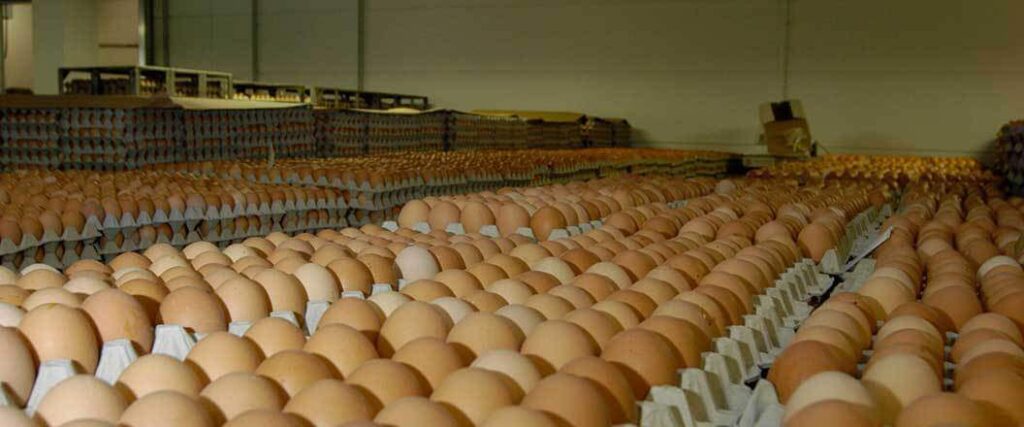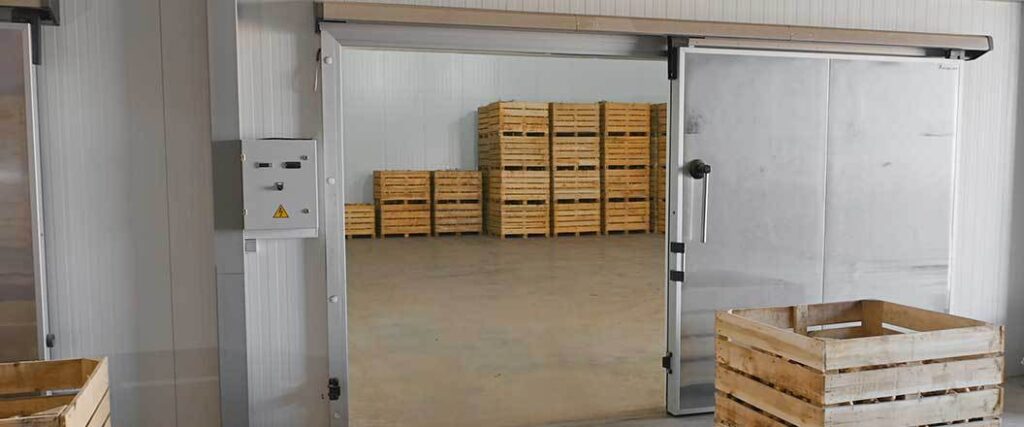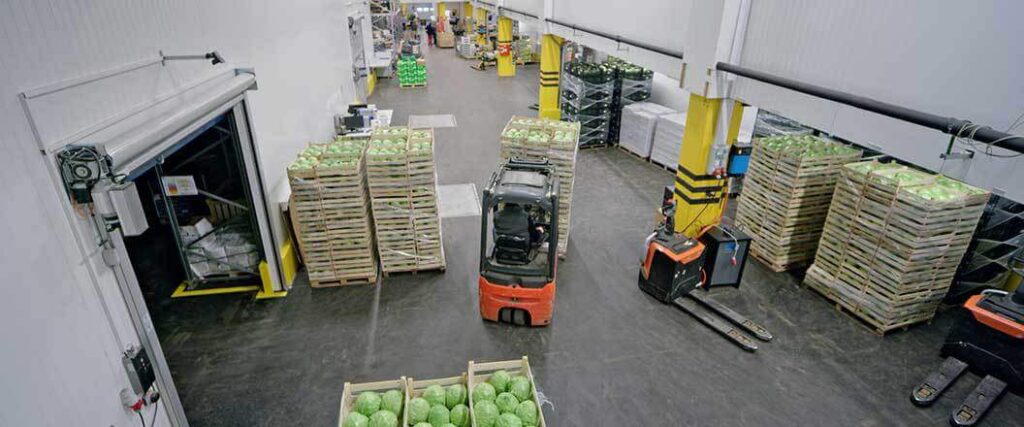A cold chain in agriculture helps extend the timetable for food products with a limited shelf life. It takes a strict cold chain to extend life cycles and retain the desired qualities in food. The need for a cold chain in agriculture is critical to the welfare of goods produced worldwide.
A cold chain in agriculture is regulated under section 415 of the Federal Food, Drug, and Cosmetic Act (FDCA). While adhering to federally regulated mandates of the Food Safety Modernization Act (FSMA) which is under the Food and Drug Administration (FDA) jurisdiction. Agricultural goods require safe handling and storage.
Want to know more about how a cold chain is a necessity in agricultural commodities? The article below discusses the importance of a cold chain in agriculture.

There is an inherent need for cold chain shipping in agriculture to preserve perishable foods and multiple facets of the things we consume daily.
The survival of humanity depends mainly upon three things: air to breathe, water to drink, and food to eat. Having a good, clean, and reliable flow of food production is crucial to our living standards and survival.
Cold chain in agriculture has a critical role in the sourcing, storing, and distributing of agriculture based goods. Without the ability to refrigerate through temperature control, agricultural goods run an absolute risk of spoiling and being unfit for consumption.
There are three steps to the agricultural cold chain process.
These three phases of the cold chain in agriculture represent the flow of refrigerated goods as commodities. This means anything from the following list can apply:
These agricultural goods represent some of the most common agricultural products moving along a cold chain daily. Each aspect of the supply chain must function like a well-oiled machine to facilitate the kind of global supply and demand that is in place.
The critical mission of a cold chain in agriculture is the preservation and continued availability of high-quality and readily available food. Adherence to FDA regulations helps to ensure that cold chains remain compliant and prevent food loss.
Our article on the benefits of temperature controlled shipping will show you how this shipping option will help you.
The application of a food-based cold chain is intricate, and many parts are federally regulated. The FDA and the FSMA have set the parameters for Food storage and distribution.
Under section 415 of the FDCA, food cold chains must adhere to the established requirements for risk-based preventive controls, which is an FSMA mandate. These mandates are required for food safety and handling. Current Good Manufacturing Practices (CGMP) also help to facilitate best practices used in a food cold chain.
Some examples of both updates to CGMP and Food Safety Plans that apply include.
With these regulatory mandates and others in place, it helps to mitigate any issues affecting a standard food supply chain. The application of a cold chain where food is concerned is more involved.
There is a distinct difference between standard food supply chains and food cold chains.
A temperature-controlled environment is critical for transporting and preserving perishable goods. Maintaining these cold environments is a crucial step in slowing or eliminating the potential for any biological decay in the goods within the chain.
It’s critical to note that all food cold chain applications require proper cold management. Sometimes, there is a breakdown in cold chain management, and temperature fluctuations occur, leading to waste.

In the world of food chain logistics, there is always a critical need for proper storage after food goods are collected. A cold chain warehouse is a staging area for short and long term storage before actual distribution occurs. .
It’s essential to note that not all food goods requiring temperature-controlled packaging or storage are kept at the same temperatures. There are varying degrees at which cold food is stored to keep them safe.
| Food Type | Controlled Temperature |
| Produce | 40 degrees Fahrenheit |
| Wine | 60 degrees Fahrenheit |
| Frozen Fish & Meat | - 0.4 degrees Fahrenheit |
| Ice Cream | - 31 degrees Fahrenheit |
Through temperature-controlled warehouses, the rate at which chemical or physical change happens is significantly reduced. The preservation of food goods severely restricts the possibility of any form of biological decay from occurring.
Efficient cold chain businesses can control the temperature in various storage zones throughout their facilities by using varying insulation levels and industrial cooling systems.
Cold storage warehouses use elaborate cooling systems that are nothing like a typical air conditioning system in your home. They are carefully engineered with the appropriate insulation to maintain specific temperature ranges in different parts of the warehouse.
The required refrigeration ranges in a cold storage warehouse will vary depending on what is stored and where it is stored:
Both forms of cold storage are inherently designed to preserve and protect food goods. At the same time, they are stored within the required safety limits. The question of storage capacity is also a critical one.
The cold chain warehouse you use should be equipped to handle any volume you need to move. Managing fluctuations in volume while maintaining the storage of your goods is essential.
The need for temperature control for products is critical. Fresh produce is a commodity that will suffer significantly from biological deterioration without refrigeration. Both fruits and vegetables often require controlled temperatures in both storage and shipping.
The purpose of refrigeration is not just limited to safety concerns but also quality in terms of active shelf life. The integration of cold chain warehouse automation has dramatically reduced both safety hazards and the movement of products while maintaining appropriate temperatures.
Temperature measurement and monitoring tools include some of the following:
The Florida Department of Agriculture and Consumer Services (FDACS), Division of Food Safety outlines the need for temperature monitoring. They are essential in any cold storage facility, with critical importance to producing sustainability.
As far as produce is concerned, leafy greens need strict temperature controls in both storage and transportation. By maintaining set temperatures, the risk of food-related hazards is drastically minimized. This allows shippers to overcome the challenges in cold chain logistics.

The packaging equipment for cold and frozen food will differ because of the temperature requirement of the goods being stored or shipped. The amount of insulation used and the kind of cooling solution adopted all affect packaging.
The use of adaptive, hybrid, and passive packaging and storing solutions is common in the agricultural cold chain. Cold food packing in a cold chain facility is not uniform.
It requires different forms of packaging depending on the following.
Depending on the commodity type, the following packaging solutions are used:
The status of cold chains in agriculture is a constantly evolving one. New technologies and practices are frequently in flux. Research and science are conducted daily to ensure that our agriculture-based goods in a cold chain are safe and of the highest quality.
Cold food packaging is a crucial component of an effective and sustainable food cold chain. Without this shipping and storage solution, the risks for spoilage and additional hazards that can prove harmful when consumed increase.
It is in the cold warehouse where staging, additional packaging material, and distribution preparation occurs. The cold chain operational management ensures that temperature controls and handling protocols are always maintained.
Once the goods are loaded onto a refrigerated transport using temperature-controlled packaging, additional equipment like insulated covers might be required. Once the trailer is loaded, distribution will then occur.
Temperature-sensitive goods, especially agricultural goods, require expert handling and care. Prolonging shelf life, reducing biological contaminants, and protecting your investment are our primary concerns at USA Refrigerated Shipping.
USA Refrigerated Shipping has cold storage, shipping, and distribution network solutions that will ensure that your agricultural-based goods are handled with the greatest of care. Our experienced professionals are standing by to facilitate your cold chain needs in agriculture.
We offer cold chain solutions in a number of different fields:
Our industry services use the latest and best technologies, storage solutions, and the fastest and most accurate distribution methods. Call us at (866) 849-2713 or click today to consult with a specialist and get started today.
USA Refrigerated Freight
315 NE 14th Street #4122
Ocala, FL 34470